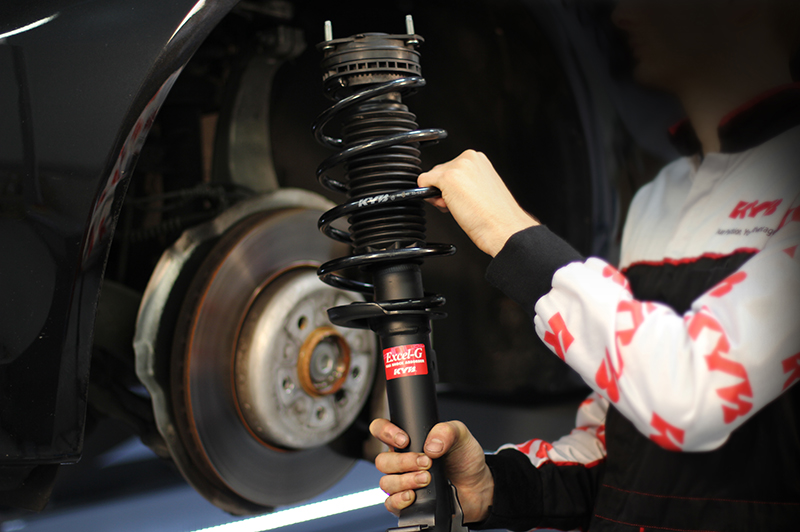
KYB Europe shares some useful tips for technicians when fitting shock absorbers, coil springs or suspension mounting kits.
Holding the piston rod:
One of the most common reasons for the seal on a shock absorber to fail and cause oil to leak is damage to the piston rod during installation. Mole grips, pliers and other tools should never be put directly onto the piston rod as these can score the smooth shaft causing wear and damage to the seal. Near the top of the shaft, just above where the thread starts, is an area for the tools to be positioned safely.
Use the supplied nuts:
If a KYB shock absorber comes with a tXhreaded nutX, tXhXis must be used during fitment instead of re-using the one that came off the old part. If a nut is not supplied, then the original one should be re-used.
Replacing cartridges:
When installing a new KYB cartridge, do not put any water or other fluids into the strut housing and ensure that the housing is empty of any existing fluid as as they are designed to be used without any additional liquids.
Clocking suspension mounting kits:
When disassembling a strut, it is recommended to mark the parts of the suspension to secure the proper positioning and sequence of parts that are re-used, which is known as “clocking”. Pay special attention to the correct sitting of the upper coil to the upper mounting plate, to ensure the re-assembly is correct and accurate.
Shock absorber length:
Occasionally a new shock absorber can appear to be a different length to the one which has come off the vehicle. The most common reason is the use of an internal rebound spring on the KYB product, and the absence of the bump stop from the OE product, which can sometimes be removed on later models by vehicle manufacturers to save cost. Sometimes it’s necessary to raise the axle or suspension slightly in order to attach the mounting kit which is also common on many OE components. Providing that the part has been selected from the KYB catalogue using the exact vehicle specifications, the part is safe to fit.
Correct torque:
Do not use an air or electric impact wrench to tighten the upper mounting nut on the piston rod as this can make the torque higher than recommended and cause damage. Hold the piston rod with a wrench or special tool (not vice grips or pliers) at the machined shoulder and use a torque wrench set to the vehicle manufacturer’s specification which can be found in the KYB suspension solutions app. The final tightening should be completed after the full weight of the vehicle has been applied.
Replacing in pairs:
To ensure the vehicle performs safely and as designed, it is recommended to replace shock absorbers in axle pairs. This is because when the damping rates are significantly different from left to right, the vehicle body and wheel movement variations can cause handling abnormalities.
Priming:
Occasionally a shock absorber can be diagnosed as faulty when actually it just needs to be primed. Shock absorbers are usually stored and transported horizontally which can cause small air pockets to form, which can affect the damping force. To avoid this, it’s recommended to prime the shock absorber three or four times which means compressing and extending the piston rod to remove the air.
Wheel alignment:
Depending on the vehicle design, wheel alignment may be required following strut replacement. All struts affect alignment in some way so it’s best to check the specific vehicle service manual and specifications.









